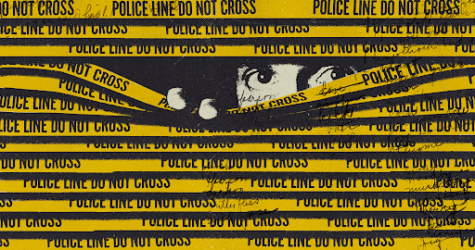The Evolution of Puppetry in Media
Puppetry is not only a challenging art form, but is limitlessly expressive.

Puppetry has created an entire new media style.
May 23, 2023
Puppets were first made widely popular in western media by the introduction of “Sesame Street” on the National Education Television Network, which later became what we know today as Public Broadcasting Service, or PBS, in 1969. “Sesame Street” was produced by Joan Ganz Cooney, and the characters were created by Jim Henson after he was approached by her and asked to make various characters to populate Sesame Street. Since then, many different puppets have been introduced in western culture, most notably Henson’s “The Muppets” and “The Dark Crystal,” released in 1976 and 1982, respectively. Henson, the pioneer behind the majority of mainstream puppet media, has created several imaginative, beloved worlds which can appeal to people of all ages and that continue to provide much-adored entertainment such as the new Disney + show, “Muppets NOW,” and the continued airing of “Sesame Street.”
Puppetry is an art that can not be easily learned, and therefore is difficult to create projects with. According to Puppet Ministry World, the most important part of the craft is the ability to create expressive body movements and facial expressions in the puppet through learning how to control its motor functions such as height, position and lip synchronization. It is an advanced form of performing, and it has evolved from playful childhood programs to more darker, complex worlds such as that of “The Dark Crystal,” with dramatic costumes and twisted fairytale-esque stories. The movie was turned into an original Netflix series in 2019, with “The Dark Crystal: Age of Resistance.” These various programs have won several awards over the years, with “The Muppets” winning an academy award in 2012, and “Sesame Street” having won over 15 different awards since its airing, not including an Emmy in 1970 for Outstanding New Series. Regardless of the difficulty of puppetry, it is incredibly admirable that people like Henson constantly push to diversify the mediums shown on modern television and make efforts to introduce lovable, well produced, creative storylines and characters to the masses.
These shows and movies, ranging from dark fantasy adventure to bright, upbeat children’s comedies all have their well-earned place in many people’s hearts. The New York Times writes: “In dark times, people crave comfort. In scuzzy and dystopic times, people reach beyond themselves, and create something that might comfort generations.” “Sesame Street,” “The Muppets,” these programs have fostered messages of tolerance and kindness to new generations, and given people characters to relate to and find joy in in equal measure, and that is crucially important to any person who might feel alone or alienated. In pushing such supportive, optimistic messages they have created a platform of hope for the future, and finding inspiration in the eccentric. As Kermit the Frog so wisely said: “Yeah, well, I’ve got a dream too, but it’s about singing and dancing and making people happy. That’s the kind of dream that gets better the more people you share it with.”
Puppets were first made widely popular in western media by the introduction of “Sesame Street” on the National Education Television Network, which later became what we know today as Public Broadcasting Service, or PBS, in 1969. “Sesame Street” was produced by Joan Ganz Cooney, and the characters were created by Jim Henson after he was approached by her and asked to make various characters to populate Sesame Street. Since then, many different puppets have been introduced in western culture, most notably Henson’s “The Muppets” and “The Dark Crystal,” released in 1976 and 1982, respectively. Henson, the pioneer behind the majority of mainstream puppet media, has created several imaginative, beloved worlds which can appeal to people of all ages and that continue to provide much-adored entertainment such as the new Disney + show, “Muppets NOW,” and the continued airing of “Sesame Street.”
Puppetry is an art that can not be easily learned, and therefore is difficult to create projects with. According to Puppet Ministry World, the most important part of the craft is the ability to create expressive body movements and facial expressions in the puppet through learning how to control its motor functions such as height, position and lip synchronization. It is an advanced form of performing, and it has evolved from playful childhood programs to more darker, complex worlds such as that of “The Dark Crystal,” with dramatic costumes and twisted fairytale-esque stories. The movie was turned into an original Netflix series in 2019, with “The Dark Crystal: Age of Resistance.” These various programs have won several awards over the years, with “The Muppets” winning an academy award in 2012, and “Sesame Street” having won over 15 different awards since its airing, not including an Emmy in 1970 for Outstanding New Series. Regardless of the difficulty of puppetry, it is incredibly admirable that people like Henson constantly push to diversify the mediums shown on modern television and make efforts to introduce lovable, well produced, creative storylines and characters to the masses.
These shows and movies, ranging from dark fantasy adventure to bright, upbeat children’s comedies all have their well-earned place in many people’s hearts. The New York Times writes: “In dark times, people crave comfort. In scuzzy and dystopic times, people reach beyond themselves, and create something that might comfort generations.” “Sesame Street,” “The Muppets,” these programs have fostered messages of tolerance and kindness to new generations, and given people characters to relate to and find joy in in equal measure, and that is crucially important to any person who might feel alone or alienated. In pushing such supportive, optimistic messages they have created a platform of hope for the future, and finding inspiration in the eccentric. As Kermit the Frog so wisely said: “Yeah, well, I’ve got a dream too, but it’s about singing and dancing and making people happy. That’s the kind of dream that gets better the more people you share it with.”
















